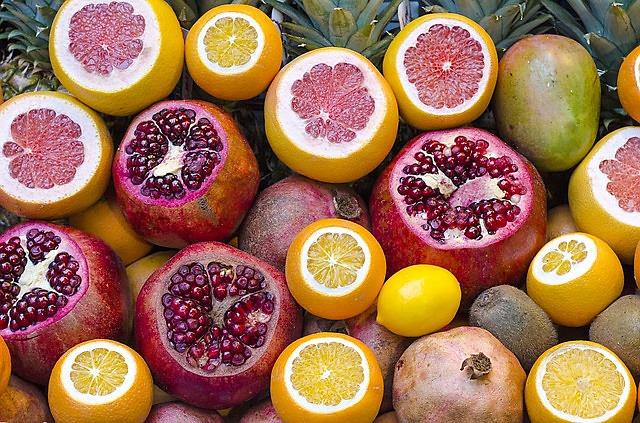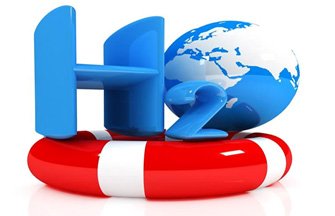
by Fern Shaw | Jan 7, 2016 | Health and Hydration
Me personally, I don’t do New Year’s Resolutions. I stopped around 1990 something. Not sure why, just did. Just in case you do though, I thought it only polite to share an amusing and sometimes witty selection of resolutions and opinions about resolutions just in case you’d like to adopt any of them or share then with the world at large. (Or have a witty one liner to riposte with should someone take you to task about the dreaded tradition). Or to cheer up your compadres at the water cooler as you gather round to make a dent in all that festive season cheer.
“Now is the accepted time to make your regular annual good resolutions. Next week you can begin paving hell with them as usual.” ~ Mark Twain
“A new year’s resolution is something that goes in one year and out the other.” ~ Anonymous
“May all your troubles last as long as your New Year’s resolutions.” ~ Joey Adams
“This year, let’s resolve to make better bad decisions.” ~ someecards
New Year’s Resolution. This year I’m going to incorporate “I don’t roll that way” into at least one conversation a week. ~ Colin Quinn (@iamcolinquinn)
‘Finish a Lypsyl – Oh what a day! If you can manage to hold on to that sucker for the better part of six months (maybe a year), be proud. Be even more proud if you use the Lypsyl enough in these six months that it actually finishes. It’s totally worth the effort of keeping that thing out of the laundry, the rubbish bin, off the ground and out of the sticky fingers of your chapped lipped friends. Facebook status worthy, yep. ‘ ~ Brittani Sponaugle
Whether you choose to go the resolute route or no, here’s to a wonderful 2016!

by Fern Shaw | Nov 9, 2015 | Health and Hydration, Water
Typing the query ‘which fruit contains the most water’ into the omnipresent Googlio, and BAM! this is what came up:
‘Grapefruit.’
Then more about watermelon and strawberries – thing is, watermelon and strawberries seem to contain more water than grapefruit – ninety two percent as opposed to the ninety one percent of water in grapefruit. This leads me to believe that there’s some secret grapefruit marketing organisation that’s fruit bombing Googlio to ensure that the lesser watered grapefruit receives pole position.
Anyhow, I’m all okay with it – I really enjoy grapefruit, not so much watermelon. It may stem from my clever mother who used to prepare our half a grapefruit with a sprinkle of brown sugar and a Maraschino cherry on top every single morning, rain or shine; or because I’ve just always enjoyed the more citrus of fruits.
Grapefruit also contain powerful anti-oxidants. What are anti-oxidants? Well, simply put, they are one of the first lines of defence that the body employs to keep free radicals in check and prevent them from causing a domino effect of damage on other cells. Antioxidant compounds can ‘donate’ electrons to unstable free radicals so they don’t have to snatch electrons from unsuspecting nearby cells.
The rich pink and red colours of grapefruit are due to lycopene, a carotenoid phytonutrient. A carotenoid gives fruit their red, orange and yellow colour. These compounds are believed to protect against certain cancers, heart disease and even vision loss due to macular degeneration. You won’t find lycopene in white grapefruit. White grapefruit? Didn’t know there was white grapefruit! Continuing, lycopene appears to have anti-tumour activity. Among the common dietary carotenoids, lycopene has the highest capacity to help fight oxygen free radicals, which are compounds that can damage cells.
So, aside from its top ranking despite it having the second highest water content, it would seem that grapefruit is all that.
Something to keep in mind as we head into the colder months and you’re probably more inclined towards comfort food and drinking less water, is to look to the grapefruit with its high water content and it being packed full of all that is good for you.

by Fern Shaw | Sep 15, 2015 | Health and Hydration, Water
Great excitement abounds as we draw closer to the 2015 Rugby World Cup being held in the U.K. this year, starting on 18 September and the final being played at Twickenham on 31 October. One would hope so, as rugby was invented in England in 1823. Legend has it that during a game of football at Rugby School in Warwickshire, a 16 year old student, William Webb Ellis, caught the ball and ran with it towards the opponent’s goal line, rather than following the rules of the times of catching and kicking the ball only.
From our side, as we’re all about things water, we’ve approached keeping hydrated from two angles – keeping yourself hydrated when playing the sport and how to keep yourself hydrated as a fan of the sport!
Perhaps you’re more couch potato than skinny fries when it comes to your sports participation. That’s why when you go from supine to five jumping jacks in a short time, you feel faint, you’re sweating bullets, your heart races, your face turns an interesting shade of puce and you may just feel like purging your most recent meal. This description should give you some idea of why your hydration needs are very different from your favourite rugby team.
Sports Hydration
As you can imagine, the physical and mental energy expended in a rugby match is monumental. In order to keep an athlete’s body (and mind) in peak condition, hydration and rehydration are of paramount importance. An example of just how important hydration is? A player can lose up to 3 to 4 kilograms during one match.
Although this year the temperatures won’t be soaring like they did at the 2013 Rugby League World Cup in Papua New Guinea, where the thermometer reached a cracking 33°C, players always go through strenuous pre-match tests to ensure that they are properly hydrated.
They are weighed before and after training, they have urine tests every day and they fill in wellness charts. If temperatures tend to soar during matches, additional breaks can be implemented during each half. The good news is that these players, their coaches and managers are all highly experienced. So, that’s them covered – now we worry about you, the supporter.
Supporter Hydration
Being a rugby supporter can also be very strenuous – take it from me – at the 2007 Rugby World Cup, there was a lot of supporting, jumping up and down, cheering and moaning going on, and we won’t make too much mention of the quaffing of the many shots in support of one’s national team – usually a concoction of luminescent coloured alcohol. Thirsty work all round, but quenching one’s thirst in the altogether incorrect manner with nary a bottle of water to be seen. Not the right way to stay strong for your team!
So in order to actually enjoy the entire event (instead of giving it your all during one match and spending the remainder of the World Cup hiding underneath your duvet), be kind to yourself:
If you’re fortunate enough to be attending the matches at any of the stadiums:
– Check to see if you can take your own water in with you.
– If you’re walking long distances to get to stadiums, as always, make sure you’ve plenty of bottled water to drink.
– If you’re staying home and know that your supporting is going to be a steady diet of drinking and fry-ups, try to make sure that before you get into supporter mode you drink lots of water. This will mean that you should have more energy in reserve when it comes to the all-important cheering, jumping up and down and singing mentioned beforehand.
Right, you’re sorted, my work here is done. If you need me, I’ll be the one in the Scotland rugby jersey, singing, ’Doe-a-deer’ and ‘Scoooootttlannnd / Scoooooooootttllannnnnd’.
On a more serious note, if you think you or your company will be thirsty during the World Cup, we are so the right people to speak to. Call us on 0800 772 3003 or e-mail us at shelly@aquaidwatercoolers.co.uk

by Fern Shaw | Jul 31, 2015 | Health and Hydration
Aha! Bet that got your attention. Now I have it, can I direct you towards this selection of wrist watches I’m selling? Only joking – however, in all seriousness, when the temperatures start to soar in the summer months, dehydration can occur quicker than you may think.
Here are some quick and easy tips on how to stave off dehydration (and they don’t all involve drinks) –
For Adults:
- Tea – A recent UK study found drinking up to four mugs of black tea with milk a day is just as hydrating as drinking the same quantity of water. Bear in mind though, that the caffeine in tea starts acting as a diuretic (increases fluid loss by causing you to pass more urine) when you exceed around five cups a day, so go easy or sip water in between your mugs of tea.
- Coconut water – Fresh coconut water is naturally isotonic, with a 330ml serving containing more potassium than two bananas plus five other naturally occurring electrolytes. It has one-fifth of the sugar found in fruit juice, plus a little fibre.
- Cucumbers – No matter how you slice ‘em and dice ‘em, cucumbers keep cool at the number one spot on the list of water-logged fruits and vegetables. At 96 percent water, cucumbers have no saturated fat or cholesterol, and are very high in vitamin K, vitamin B6 and iron. Stack slices with watermelon and you’ve a pretty, tasty and water filled snack.
- Watermelon – In the world of thirst quenchers, watermelon weighs in as a major contender. Based on its name, it’s no surprise this fruit is made up of 92 percent water! But its salt, calcium and magnesium is what makes it ideal for rehydration, according to a 2009 study at the University of Aberdeen’s Medical School.
- Lettuce – Iceberg lettuce may be 96 percent water, but it’s not known for much else in the nutrition department. Richer salad greens and sandwich toppers including butterhead, romaine and spinach are more well-rounded choices and still up your hydration.
For Children:
- Make your own ice lollies for a fluid-rich treat. Puree fruit or use no-sugar-added fruit juice and pour into freezer moulds.
- Make sure water is easily accessible for little ones. If they can’t reach the sink or the water tap in your fridge, set up an easy-to-use water dispenser and a few cups in a place where they can reach it.
- Create a reminder system for drinking water. This could be a chart on the fruidge that kids can mark each time they have a serving of water, or, if you’re out and about, a timer set on your phone to remind the family that it’s time to take a drink.
- The same as with the grown-ups (that’s you, that is), keeping hydrated doesn’t have to be water – many fruits and vegetables have a very high water content. Offer watermelon, strawberries, broccoli, celery, cucumbers and other watery fruits and veggies for snacks.
by Fern Shaw | May 20, 2015 | Health and Hydration
I’m aware that you may sometimes feel that you’re being waterlogged with information about how important it is to stay hydrated by drinking sufficient water, so this month, the wonderful, glorious month of May, pre-cursor to high summer, I’m easing back on the water rules and have gone the fun, fruity and frivolous route to make sure you beat the heat – Island Style:

Saké Spritzer: Combine 1 basil leaf, 6 mint leaves, 2 lemon twists, 1 orange wedge, 1/4 cup diced cucumber and 1 1/2 ounces orange liqueur in a shaker with ice – shake. Pour into a glass and top with sparkling sake.
If you’ve ever drunk saké, you’ll know it’s either a love or hate type situation. Me, I loooove the stuff, so I’m sorted. Be brave, be adventurous, I’ve never heard of sparkling saké, so try it with me!
Honeydew Ice: Purée 1 cup each frozen honeydew melon and frozen diced cucumber with the juice of 1 lime and some sugar.
Elderflower Fizz: Fill a glass halfway with ice and cranberry juice. Add a splash each of vodka and elderflower liqueur; top with seltzer and garnish with mint.
Elderflower is so quintessentially English and readily available you know you have to go there.
Orange-Berry Daiquiri: Purée 2 cups crushed ice, 1 cup sliced strawberries, 4 ounces light rum, 1 ounce orange liqueur, 2 ounces lime juice and 1 tablespoon superfine sugar. Pour into 2 glasses.
For this to pass the scrutiny of the sugar content police, I’d focus on the fruit and the lime juice content. Yes I would.

Guava Green Tea: Pour equal parts guava juice and green tea over ice; garnish with lemon.
There’s something about guava that just screams ‘Tropical!’ to me, I can’t wait to try this.
Instant Horchata: Sweeten rice milk with sugar; add a pinch of cinnamon. Serve over ice with diced cantaloupe and pecans.
Don’t be asking me what horchata is. There’s a link already in there for you to use. *Clickety-click!* (I didn’t know what it was either, but I’d still drink it based on the ingredients).
Vir-Gin & Tonic: Crush 2 tablespoons juniper berries with 2 tablespoons fresh mint. Add 1 cup tonic; steep for 20 minutes, then strain. Serve on ice; top with tonic and 2 dashes bitters.
And we end off this refresh fest with a twist on a cherry cola:
Cherry Cooler: Purée 1/2 pound pitted cherries, 1/2 cup sugar and 1 cup strong hibiscus tea. Serve over ice and garnish with cherries.
Roll on, Summer!
by Fern Shaw | May 19, 2015 | Health and Hydration, Water
Living in South Africa as *I do, but having lived in the U.K. for a number of years, I’m often struck by the differences when it comes to barbecuing in the U.K. versus braaing in South Africa.
One needs to understand that to a large proportion of South Africans, braaing is as essentially South African as going down to the local pub is to a Brit. It transcends cultures, ages, gender – it is the definitive South African past time. Braaing is taken so seriously that there is even a national day set aside for it. This day is really a public holiday – Heritage Day, 24 September – but in typical South African style, this has morphed into National Braai Day. Yep, we take braaing that seriously.
Some indications that a BBQ is not a Braai:
- In South Africa we braai pretty much all year round.
- If there is a way to make a fire and there is some type of grid to cook meat or fish or breakfast on, we will braai.
- There are braai competitions that run from small towns’ right through to a reality television programme where contestants are put through six weeks of gruelling challenges braaing everything from bread to puddings. Yep, really.
Braaing is pretty much a domain of the male in South Africa. Experience has taught me that when my family braai at home, the rules are clear: I’m not allowed to touch the braai, not allowed to light the fire and certainly not allowed to touch the meat. I am salad or sides regulated only.
The only time I’m allowed to encroach on this domain is when we’re having chicken on the braai. This is due to my secret recipe Chicken Marinade (a traditional South African recipe passed on from my Gran) which I’m encouraged to make. The funniest thing about this delicious marinade is that it has the most basic of ingredients: – tomato sauce (ketchup), fresh garlic and Worcestershire sauce – and it’s a total hit with everybody!
Other than the amazing marinade, the only other braai domain I’ve been allowed to commandeer are the refreshments. Braai time in our summer months can reach as high as 42°C, and as I believe there is more to quenching my thirst than with an icy cold beer, I have a few beat-the-heat and thirst quenching braai cocktails and mocktails in my repertoire.
I like my liquid refreshments to be pretty as all get out; colourful and very girlie – the more a cocktail tastes like a soft drink, and looks all Island style – the better.
My current favourite summer cocktail at the braai is The Watering Hole:
Ingredients
- Watermelon
- Vodka
- Sprite Zero
- A few Limes or Lime juice
- Lots of ice
Method: Scrape the flesh out of the watermelon, discarding the pips; add the vodka; a dash of lime; top up with Sprite Zero and lots of ice.
If you’re feeling more communally minded, you could always pour your combined ingredients back into your watermelon half, add straws and that’ll complete your ‘watering hole’ or; you can pour into chilled glasses, add garnish, a cocktail umbrella or two and heat beating hydration is on track.
Although the ice, fruit juice and heck, even the alcohol in the cocktails definitely contribute towards the water quotient of your drink, it’s always a sensible (tasty cocktails, hot summer’s day – sensible?) idea to match each cocktail drunk with a glass of water. Not only will the water keep you hydrated, but it’ll also help to keep you from drinking your cocktails like soft drinks and suffering from a bit of hangover-it is – a not so rare side effect of a braai.
Cheers everybody!
*Shelly Crawford heads up the AquAid Africa office in South Africa.




